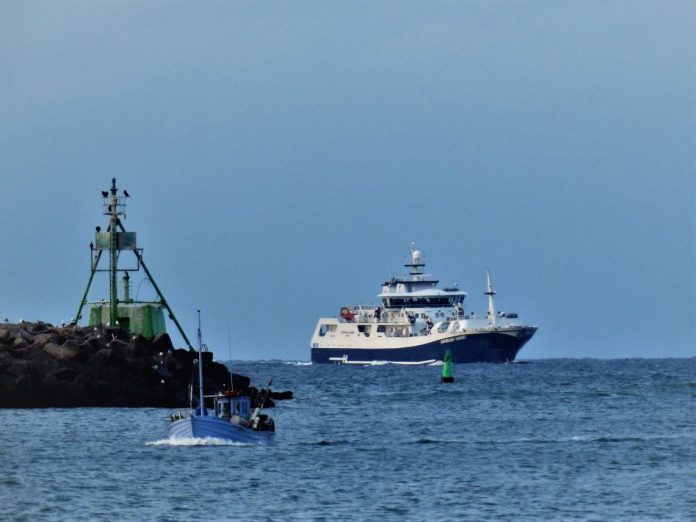The financier Kjell Inge Røkke wanted to reduce onshore fish processing, and rather invest his money offshore. Just like the owners of the harvest vessel “Norwegian Gannet”.
Kjell Inge Røkke arrived in Akureyri, Iceland, in a private jet. A tailor-made Boeing 737 with “KR” on its tail. The Islandsbanki seafood seminar was arranged in an old theater building. As the only Norwegian journalist present in the Icelandic port town, I received a rare one-on-one interview with Kjell Inge Røkke.
This was 16 years ago, and the Aker owner and billionaire was then heavily involved in fishing, through the company Norway Seafoods.

Supporter
“Today there are ten to twelve processing plants in Norway. Norway Seafoods is engaged in four of them. I have never been a supporter of land based facilities. But we’ve invested 250-300 million kroner in these plants – the same as I invested in one factory trawler in Alaska,” Røkke said. [factbox]
Kjell Inge Røkke’s logic was that he had to have the same equipment on land as he could have on board the fishing boat. By equipping the vessel with processing machines and a freezer, he could reduce his investments.
The thinking and reasoning is not unlike the logic behind the large harvest and floating processing boat, “Norwegian Gannet”. This boat is a combination of a wellboat, processing plant and cargo boat.
Gains
The savings and efficiency gains by this logic has been highlighted this winter. As SalmonBusiness reported yesterday, the harvest vessel has contributed to Denmark being the largest buyer of Norwegian salmon so far in 2020.
Transportation by sea has provided a solid advantage during this year’s winter storms. The Nordland railway has been closed for long periods, ferry routes have been cancelled and a large number of mountain crossings have been covered in snow storms.
However, “Norwegian Gannet” is sailing on borrowed time.
An exception
The ship owner Hav Line has been granted an exception by the Norwegian government from the requirement, that all so called “production fish” must be sorted on land. This exception will run out on 1st of July 2020.
“Production fish” are fish with visible wounds or deformities. According to the The Norwegian Fish Safety Authority, such fish must be sorted and corrected before being exported from Norway. Direct export of “production fish” is forbidden.
It is this quality regulation, implemented in the 1980s, that prevents Hav Line and other shipowners from building several similar harvesting boats.
Disruption
“Norwegian Gannet” is a splendid example of disruption, a newcomer turning an existing market upside down. However, the shipping company has an extensive communication and lobbying job to do to get the government on their side if they are to continue after July 1.
Kjell Inge Røkke, who earned his first billion in fishing in Alaska, struggled for a long time to convince the Norwegian authorities to see the value of facilitating increased catching and processing on large factory trawlers – at the expense of small fishing boats, land-based processors and fillet factories.
The opposition Røkke faced, from politicians, communities, fishermen, organizations and other stakeholders, is not quite different from what Hav Line has experienced over the past year.
Røkke gave up and sold Norway Seafoods.
The buyer was the salmon farmer Lerøy Seafood Group, which obviously have faith in the possibility of achieving framework conditions that can yield the billions invested in whitefish. This certainly takes deep pockets, patience and long-term thinking.
The owners of “Norwegian Gannet” will probably also face this.

